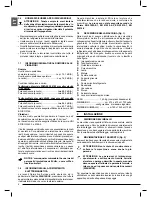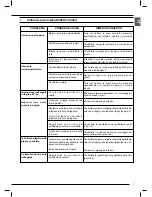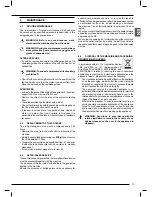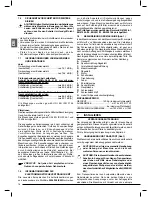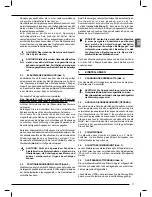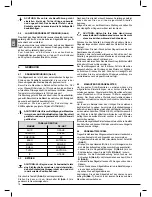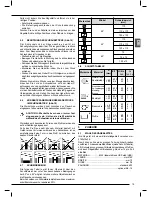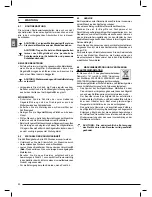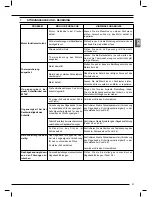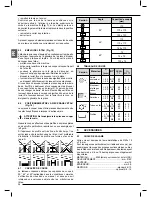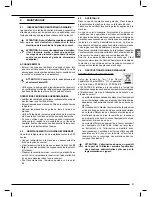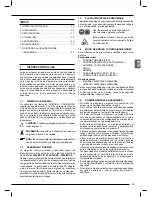
EN
14
Defective motor, power cable or
plug.
Blown electric panel fuses.
No voltage in the mains system.
The overload cutout has tripped.
Motor overheating.
Motor overload caused by excessive
cutting pressure.
Motor breakdown.
The setting of the D retainers is
inaccurate.
Excessive cutting pressure (on pipes
and section bars).
Incorrect blade toothing in relation to
the piece to cut.
Incorrect adjustment of the eccentric
and sliding blade-guides.
Incorrect cutting speed in relation to
the piece to cut.
The piece is wrongly positioned in
the vice.
The blade is worn or its toothing
is not right for the thickness of the
piece being cut.
Excessive cutting pressure.
Incorrect eccentric blade-guide
adjustment.
The motor does not work.
Overload cutout tripped.
Inaccurate cutting angle at
90° - 60°.
Inaccurate cut squaring.
Cut finish is coarse or
corrugated.
The blade tends to protrude
from the guides.
Specialized personnel should check the machine; do
not attempt to repair the motor by yourself.
Check fuse integrity and replace, if necessary.
Check for voltage in the mains system.
Release the run button and wait a few minutes for
the overload cutout to reset.
Check that motor air intakes are clear.
Perform the cut on the piece at the correct
pressure.
Specialized personnel should check the machine; do
not attempt to repair the machine by yourself.
Set the retainers by unloosening the fastening
screws and re-positioning them.
Decrease cutting pressure.
Check the cutting parameters (blade toothing, cutting
speed) in the cuts table (point 4.8).
Check blade-guide adjustment (points 3.5 and
3.6).
Check piece positioning and clamping in the vice
(point 4.6).
Check the cutting parameters (blade toothing, cutting
speed) in the cuts table (point 4.8).
Decrease cutting pressure.
Check eccentric blade-guide adjustment (point
3.6).
PROBLEMS
PROBLEMS CAUSES
SOLUTIONS SUGGESTED
7 TROUBLESHOOTING



